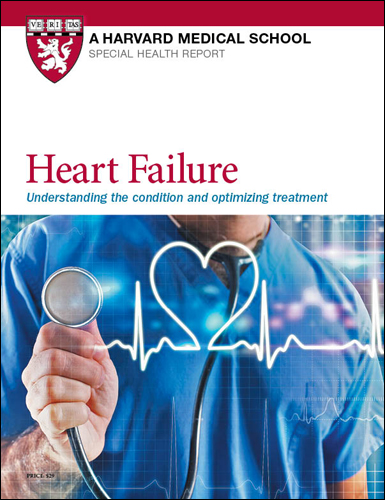What causes a stiff, narrowed aortic valve?
About 5% of people ages 65 and older have aortic stenosis. But symptoms usually don't appear until the condition becomes severe.

The term stenosis — from a Greek word meaning "to narrow" — refers to the narrowing of a passage or opening in the body. Stenosis of the aortic valve, which regulates the flow of blood from the heart to the rest of the body, can be serious. Left untreated, severe aortic stenosis can lead to heart failure and sudden death.
The incidence increases with age, rising from just over 1% for people in their 60s to nearly 10% for those 80 and older. But exactly what causes an aortic valve to narrow — and is there any way to prevent the problem from developing or progressing?
"In the United States, the most common cause is a buildup of scar tissue and calcium deposits on the valve, known as fibrocalcific aortic valve disease," says Dr. Yee-Ping Sun, a cardiologist at Harvard-affiliated Brigham and Women's Hospital. Calcium — the most abundant mineral in the body — is stored mostly in your bones and teeth. But calcium is transported in the blood, and it can accumulate in both the valves and the arteries of the heart. However, calcium deposits in the heart don't appear to be connected to the amount of calcium you consume from either foods or supplements, says Dr. Sun.
Contributing factors
In addition to age, a range of other factors can affect if and when a person develops aortic stenosis. One is a condition present at birth that is often not discovered until the person reaches middle age or older (see "What is a bicuspid aortic valve?"). Another, less frequent cause is rheumatic heart disease, a complication of an untreated strep throat infection that, over time, damages a person's heart valves. Today, rheumatic heart disease is rare in the United States, although it still occurs in some people, such as older adults who had strep throat during childhood before antibiotics were available or commonly accessible.
Certain health problems may increase a person's odds of aortic stenosis, including kidney disease, hyperparathyroidism, and inflammatory disorders such as rheumatoid arthritis, lupus, and systemic sclerosis. Having radiation therapy to the chest, usually done to treat lymphoma, is another risk factor.
Elevated blood levels of a fatty particle called lipoprotein(a), or Lp(a), also appear to contribute to aortic stenosis. Lp(a) particles are like the better-known LDL cholesterol particles, but with an extra protein attached. Currently, doctors don't routinely measure Lp(a) when evaluating people for aortic stenosis, but that may change with advancements in our understanding of Lp(a) and ways to treat it, says Dr. Sun.
What is a bicuspid aortic valve?Heart valves consist of strong, thin flaps of tissue called leaflets or cusps. A normal aortic valve has three leaflets, but about one person in 100 is born with an aortic valve that has only two flaps. Known as a bicuspid aortic valve, this defect is two to three times more common in males than females and may run in families. "If one of your parents or a sibling has a bicuspid aortic valve, your risk of the condition is between 5% and 10%," says Dr. Yee-Ping Sun, assistant professor of medicine at Harvard Medical School. A two-leaflet valve is more prone to calcium buildup, so people with bicuspid valves can develop aortic stenosis in their 50s and 60s — more than a decade earlier than those with normal, tricuspid valves. |
Aortic stenosis diagnosis
Aortic stenosis can cause shortness of breath, fatigue, and lightheadedness, especially when you're physically active. But these common symptoms have many possible causes, so they're not very helpful for pinpointing the problem. Fainting, as well as chest tightness or discomfort, can also occur. Sometimes aortic stenosis is discovered when a doctor hears an abnormal heart sound through a stethoscope; the blood flow through the narrowed valve is turbulent, creating a sound that's initially loud and then quieter, known as a crescendo-decrescendo murmur. But increasingly, aortic stenosis is found during an ultrasound of the heart (echocardiogram) done for another reason, says Dr. Sun.
Unfortunately, there are no strategies to prevent the progression of aortic stenosis. If an echocardiogram reveals only mild stenosis, your doctor may recommend a repeat ultrasound every three to five years. Moderate stenosis should be checked every year. Once you start experiencing symptoms from severe aortic stenosis, you need a new aortic valve. For many people, including those with bicuspid valves, surgery is the best option. But a less invasive, nonsurgical approach called transcatheter aortic valve implantation is an option for increasing numbers of patients.
Image: © bojanstory/Getty Images
About the Author

Julie Corliss, Executive Editor, Harvard Heart Letter
Disclaimer:
As a service to our readers, Harvard Health Publishing provides access to our library of archived content. Please note the date of last review or update on all articles.
No content on this site, regardless of date, should ever be used as a substitute for direct medical advice from your doctor or other qualified clinician.
















